Some are annual or biennial plants that self seed themselves. symbiosis permaculture Fruit trees and shrubs were mainly planted in autumn and winter by digging a hole slightly bigger than the plants root system.  In the Picasso Food Forest this layer is populated by the pre-existing 10 trees belonging to the Acer genus (4-8 meters tall) that provide organic matter for mulching through their falling autumn leaves. Farmstays, education programs, classes, tours are available all year round with incredible accommodations available through both Airbnb & Hipcamp. How to set up a Small Permaculture Nursery and Grow 1000s of Trees by yourself, CRISIS GARDENING: GROWING FOOD IN UNCERTAIN TIMES, How to Make a Living From a 1.5 Acre Market Garden, Creating a Food Forest Step by Step Guide, Here is How You Make a Living From a 4 acre Permaculture Orchard, How to Start a Small Permaculture Nursery and Grow 1000s of Trees by Yourself, How to Set up a Permaculture Farm in 9 Steps, How To Design Your Property The Process Of Permaculture Design Explained, The Definitive Guide to Building Deep Rich Soils by Imitating Nature, What Everybody Should Know About Profitable Permaculture Farms, How to Design Your Perennial Farm and Your Life Insights from Mark Shepard, How to Create a Food Forest Plant List Using a Permaculture Plant Database, How to design a Food Forest with Swales layout, Relocation Guide: How to find a like-minded permaculture community in changing times, How to perform a remote property assessment in 10 minutes (slope), How to Choose the Most Suitable Plants for Your Food Forest, Crisis Gardening: How to prepare your garden beds for planting, Living a Life of Abundance (Despite the Global Chaos), Brace yourself, the great reset is coming, Crisis garden layout: the three-step permaculture design method, How to choose the best location for your crisis garden (site assessment guide).
In the Picasso Food Forest this layer is populated by the pre-existing 10 trees belonging to the Acer genus (4-8 meters tall) that provide organic matter for mulching through their falling autumn leaves. Farmstays, education programs, classes, tours are available all year round with incredible accommodations available through both Airbnb & Hipcamp. How to set up a Small Permaculture Nursery and Grow 1000s of Trees by yourself, CRISIS GARDENING: GROWING FOOD IN UNCERTAIN TIMES, How to Make a Living From a 1.5 Acre Market Garden, Creating a Food Forest Step by Step Guide, Here is How You Make a Living From a 4 acre Permaculture Orchard, How to Start a Small Permaculture Nursery and Grow 1000s of Trees by Yourself, How to Set up a Permaculture Farm in 9 Steps, How To Design Your Property The Process Of Permaculture Design Explained, The Definitive Guide to Building Deep Rich Soils by Imitating Nature, What Everybody Should Know About Profitable Permaculture Farms, How to Design Your Perennial Farm and Your Life Insights from Mark Shepard, How to Create a Food Forest Plant List Using a Permaculture Plant Database, How to design a Food Forest with Swales layout, Relocation Guide: How to find a like-minded permaculture community in changing times, How to perform a remote property assessment in 10 minutes (slope), How to Choose the Most Suitable Plants for Your Food Forest, Crisis Gardening: How to prepare your garden beds for planting, Living a Life of Abundance (Despite the Global Chaos), Brace yourself, the great reset is coming, Crisis garden layout: the three-step permaculture design method, How to choose the best location for your crisis garden (site assessment guide). 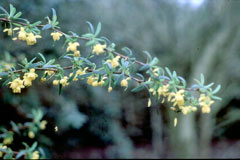 We will publish updates on their development in the future. While a mature forest is made up mainly by big trees and a closed canopy that leaves little light penetration, an immature woodland is characterized by trees of different size and height, shrubs, herbaceous plants and areas with different levels of shade and light, offering a wide variety of ecological niches and high productivity. A windrose was overlaid to the map of the site to identify the prevailing winds. From left to right: 1) Strawberry, 2) Oregano, 3) Mallow, 4) Clover. www.facebook.com/scottishforestgarden/posts/2767925186556620, https://www.facebook.com/scottishforestgarden/posts/2390524570963352, Claytonias miners lettuce, wood purslanes and springbeauties.
We will publish updates on their development in the future. While a mature forest is made up mainly by big trees and a closed canopy that leaves little light penetration, an immature woodland is characterized by trees of different size and height, shrubs, herbaceous plants and areas with different levels of shade and light, offering a wide variety of ecological niches and high productivity. A windrose was overlaid to the map of the site to identify the prevailing winds. From left to right: 1) Strawberry, 2) Oregano, 3) Mallow, 4) Clover. www.facebook.com/scottishforestgarden/posts/2767925186556620, https://www.facebook.com/scottishforestgarden/posts/2390524570963352, Claytonias miners lettuce, wood purslanes and springbeauties.  The analysis was made with monthly and yearly data. Further information (in Italian). Some of them die to the ground in winter and re-grow during the next spring. I have eaten one or two off my plants in the past, but didnt really enjoy them much. Here in Australia there is a company in Western Australia that has cultivated a prostrate version of Tagasaste, the classic Permaculture nitrogen fixing tree, which produces forage for livestock or mulch, has a deep taproot, so is drought tolerant, but does not grow to the height of the classic Tagasaste tree.
The analysis was made with monthly and yearly data. Further information (in Italian). Some of them die to the ground in winter and re-grow during the next spring. I have eaten one or two off my plants in the past, but didnt really enjoy them much. Here in Australia there is a company in Western Australia that has cultivated a prostrate version of Tagasaste, the classic Permaculture nitrogen fixing tree, which produces forage for livestock or mulch, has a deep taproot, so is drought tolerant, but does not grow to the height of the classic Tagasaste tree.  The herbaceous and ground cover layers instead are being constantly updated with new plants and experimental varieties. The first planting took place on the 23rd December 2012. Best luck from Perugia
The herbaceous and ground cover layers instead are being constantly updated with new plants and experimental varieties. The first planting took place on the 23rd December 2012. Best luck from Perugia  Hey you got a name for this company? The taste is part citrussy, part resiny.Growing and eating udo Araliacordata. Required fields are marked *. The system is still young and only time will allow us to understand which experiments really work and which need corrections, revision or further development. Download my free site survey checklist and use it as your reference during this phase of the design. In the photo the development of the ground cover around a young fig tree can be seen. _. Inspiring example, wonderful! Inspired by Dave Jackes Edible Forest Gardens but narrowing it down to USDA zone 8, A Georgia Food Forest is a permaculture-oriented illustrated guide for planning your own food forest of perennial fruit, nut and berry vines, bushes, trees, vegetables and herbs that work in USDA climate zone 8. View all the details about our trials on the dedicated page!
Hey you got a name for this company? The taste is part citrussy, part resiny.Growing and eating udo Araliacordata. Required fields are marked *. The system is still young and only time will allow us to understand which experiments really work and which need corrections, revision or further development. Download my free site survey checklist and use it as your reference during this phase of the design. In the photo the development of the ground cover around a young fig tree can be seen. _. Inspiring example, wonderful! Inspired by Dave Jackes Edible Forest Gardens but narrowing it down to USDA zone 8, A Georgia Food Forest is a permaculture-oriented illustrated guide for planning your own food forest of perennial fruit, nut and berry vines, bushes, trees, vegetables and herbs that work in USDA climate zone 8. View all the details about our trials on the dedicated page! 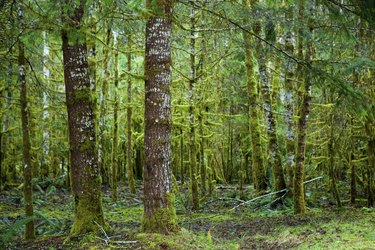 Than the plant was settled and the hole filled with the excavated dirt mixed in equal parts with purchased potting soil. As far as the cardboard you really got all the laborious aspects listed. Your email address will not be published. Caucasian spinach (Hablitzia tamnoides)A perennial climber with spinach-like leaves and edible shoots. Kimseed, based in the Kimberly area of Western Australia was apparently established to tree the local area$50 will provide enough seed to plant out every street in Parma with Tagasaste! Many plants develop underground roots, tubers and bulbs that are edible (or not edible). agathis agathis macrophylla macrophylla user user pfaf pfaf olunga tau tau olunga wikimedia Save my name, email, and website in this browser for the next time I comment.
Than the plant was settled and the hole filled with the excavated dirt mixed in equal parts with purchased potting soil. As far as the cardboard you really got all the laborious aspects listed. Your email address will not be published. Caucasian spinach (Hablitzia tamnoides)A perennial climber with spinach-like leaves and edible shoots. Kimseed, based in the Kimberly area of Western Australia was apparently established to tree the local area$50 will provide enough seed to plant out every street in Parma with Tagasaste! Many plants develop underground roots, tubers and bulbs that are edible (or not edible). agathis agathis macrophylla macrophylla user user pfaf pfaf olunga tau tau olunga wikimedia Save my name, email, and website in this browser for the next time I comment. 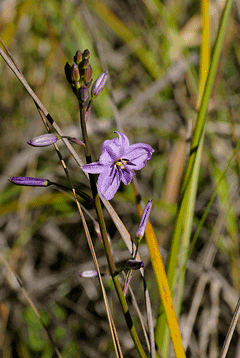 Thank you for a really helpful list. Started in December 2012, the project aims to create a public food forest whose fruits will be available to the inhabitants of Parma.
Thank you for a really helpful list. Started in December 2012, the project aims to create a public food forest whose fruits will be available to the inhabitants of Parma.  Enter your email address to subscribe to this blog and receive notifications of new posts by email. Various seedlings of Symphitum officinale (comfrey) have been planted in various part of the site. Zone 1 is the area most intensively designed and managed, where the development of the herbaceous and ground covering layer has already started, extended mulching is taking place to improve soil fertility and some raised bed were built to experiment on some annual root, starch and protein rich crops. permaculture Planting was performed according to the 7 layers (or more) that can be easily identified in a forest system, and with the need to create guilds of herbaceous plants around fruit trees and shrubs. The ground cover function is performed by many of the plants included in the previous herbaceous layer although some have better performance than other in such function. By imitating these processes and inserting in the ecosystems plants that are useful to humans it is possible to create food production systems that require a lot less resources than those currently required by industrial agriculture, contributing to the improvement of the soil and the habitat rather than causing their erosion and destruction. Both biennial and perennial varieties are available.Daubentons kale growing andcookingPerennial kale breeding. trees leaves shed rainforest hoh olympic fall nat wa park pawpaw trees grow growing pawpaws zones The site covers an area of about 4500 m2 and has the shape of two rectangles oriented in the form of a L. This shape (being narrow and long) gives to the design some restrictions but we will try to get the most out of it. In the fall of 2014 a few plants of Rubus nepalensis and Rubus pentalobus, known for their efficiency in covering ground, were introduced and they quickly settled. Using blight resistant varieties like the Sarpo family and growing new ones from seed allows you to grow them more like a perennial crop, less like an honorary annual. Thanks. Tatties?
Enter your email address to subscribe to this blog and receive notifications of new posts by email. Various seedlings of Symphitum officinale (comfrey) have been planted in various part of the site. Zone 1 is the area most intensively designed and managed, where the development of the herbaceous and ground covering layer has already started, extended mulching is taking place to improve soil fertility and some raised bed were built to experiment on some annual root, starch and protein rich crops. permaculture Planting was performed according to the 7 layers (or more) that can be easily identified in a forest system, and with the need to create guilds of herbaceous plants around fruit trees and shrubs. The ground cover function is performed by many of the plants included in the previous herbaceous layer although some have better performance than other in such function. By imitating these processes and inserting in the ecosystems plants that are useful to humans it is possible to create food production systems that require a lot less resources than those currently required by industrial agriculture, contributing to the improvement of the soil and the habitat rather than causing their erosion and destruction. Both biennial and perennial varieties are available.Daubentons kale growing andcookingPerennial kale breeding. trees leaves shed rainforest hoh olympic fall nat wa park pawpaw trees grow growing pawpaws zones The site covers an area of about 4500 m2 and has the shape of two rectangles oriented in the form of a L. This shape (being narrow and long) gives to the design some restrictions but we will try to get the most out of it. In the fall of 2014 a few plants of Rubus nepalensis and Rubus pentalobus, known for their efficiency in covering ground, were introduced and they quickly settled. Using blight resistant varieties like the Sarpo family and growing new ones from seed allows you to grow them more like a perennial crop, less like an honorary annual. Thanks. Tatties?  Parma is not a particularly windy area. water situation, climate, soil, slope, aspect, wildlife.
Parma is not a particularly windy area. water situation, climate, soil, slope, aspect, wildlife. 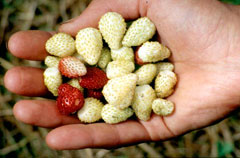 To source any of these, see My seeds or Other suppliers. Sometimes even reading books such as, So today Ill let you in on my process and Ill also share additional resources that will. They will see the young trees and the entire forest mature along the years and the plants developing sprouts, leaves, flowers, fruits and seeds along the seasons. I love the Birdseye view of your plot at the end! Raspberry (Rubus idaeus)My favourite soft fruit, and a natural inhabitant of the woodland edge. berberis pfaf fern ken plants future Here it follows a detailed description of the plants hat have been included in the system so far, grouped by the vegetation layer to which they belong (though many occupy more than one layer). It includes woody plants that can reach up to 3 meters height such as most of the edible fruit shrubs. Persian garlic (Allium altissimum)As well as being a striking ornamental, Persian garlic is a vigorous plant, producing large clumps of mild, garlic-flavoured bulbs, available outside the wild garlic season and easy to preserve by slicing and drying. From left to right: 1) Nasturtium flowers (Tropaeolum majus), 2) Yarrow flowers (Achillea millefolium), 3) Artichoke plant (Cynara cardunculus), 4) Artichokes, 5) Borage flowers (Borago officinalis), 6) Sage flowers, 7) Marigold flower, 8) Absinthe (Artemisia absinthium), 9) Valerian, 10) Beet, 11) Helichrysum, 12) Mint, 13) Hyssop, 14) Sage, 15) Garlic mustard (Alliara Petiolata), 16) Balsam herb (Tanacetum balsamita), 17) Sunflower, 18) Lemon beebrush (Lippia citrodora), 19) Asparagus, 20) Greek basil. The people visiting will be able to follow the evolution of this small ecosystem along the years and along the seasons. tree pistachio grow climate trees articles related fruit trees zone bushes tree nursery garden
To source any of these, see My seeds or Other suppliers. Sometimes even reading books such as, So today Ill let you in on my process and Ill also share additional resources that will. They will see the young trees and the entire forest mature along the years and the plants developing sprouts, leaves, flowers, fruits and seeds along the seasons. I love the Birdseye view of your plot at the end! Raspberry (Rubus idaeus)My favourite soft fruit, and a natural inhabitant of the woodland edge. berberis pfaf fern ken plants future Here it follows a detailed description of the plants hat have been included in the system so far, grouped by the vegetation layer to which they belong (though many occupy more than one layer). It includes woody plants that can reach up to 3 meters height such as most of the edible fruit shrubs. Persian garlic (Allium altissimum)As well as being a striking ornamental, Persian garlic is a vigorous plant, producing large clumps of mild, garlic-flavoured bulbs, available outside the wild garlic season and easy to preserve by slicing and drying. From left to right: 1) Nasturtium flowers (Tropaeolum majus), 2) Yarrow flowers (Achillea millefolium), 3) Artichoke plant (Cynara cardunculus), 4) Artichokes, 5) Borage flowers (Borago officinalis), 6) Sage flowers, 7) Marigold flower, 8) Absinthe (Artemisia absinthium), 9) Valerian, 10) Beet, 11) Helichrysum, 12) Mint, 13) Hyssop, 14) Sage, 15) Garlic mustard (Alliara Petiolata), 16) Balsam herb (Tanacetum balsamita), 17) Sunflower, 18) Lemon beebrush (Lippia citrodora), 19) Asparagus, 20) Greek basil. The people visiting will be able to follow the evolution of this small ecosystem along the years and along the seasons. tree pistachio grow climate trees articles related fruit trees zone bushes tree nursery garden 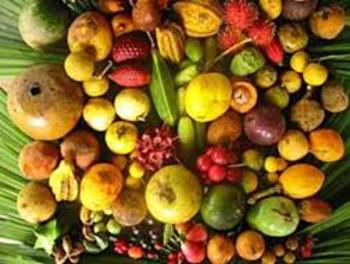 Not all specimens for each species were included to enhance cartographic clarity. The use of wood chips for mulching in the Picasso Food Forest allows the establishment of this active and vital layer from which many plants seem taking great benefit. It includes probably the most diverse variety of plants in a food forest. As ever, a lovely and super informative post Alan, thank you! Log in, You see, given enough time every ecosystem ends up like a forest. The analysis, that took into consideration also the shadowing caused by surrounding buildings and other features, shows that the area receives a considerable amount of direct sunshine during the year with the exception of the zone situated on the North side in winter where the soil receives less than 3 hours sunshine due to shadowing from tall buildings. nicotiana nicotiana rustica rustica plant plant tobacco tobacco wild wild user user pfaf pfaf wikimedia wikimedia commons commons wiki wiki I am off to look at what you do with your Daylily flowers. Chives (Allium schoenoprasum)There is a huge number of leafy alliums that can be grown in the forest garden, but this traditional one is still one of my favourites. Thanks Alan. Here is a recommendation from Martin Crawfords, I wont go into detail on how you should be planting, for step-by-step details watch the, In short, just make sure you dig a large enough planting hole, spread the roots, and sprinkle in mycorrhizal inoculant or dip the roots in a mycorrhizal root dip. protect the soil from water evaporation in summer and from winter frost; protect the soil from the erosive and compaction action of the rain; enrich it in organic matter thank to the break down of the mulch; keep under control the growth of spontaneous plants by blocking light; About 30 liters per week for the trees and 15 liters for the shrubs in their first year since planting, distributed in two or three irrigation turns. A public park, to use more common terms, in which trees and plants do not only provide aesthetic functions, shade and oxygen but will also provide food for the people living in the urban context and wildlife habitat. Finally an official permaculture activity in italy!
Not all specimens for each species were included to enhance cartographic clarity. The use of wood chips for mulching in the Picasso Food Forest allows the establishment of this active and vital layer from which many plants seem taking great benefit. It includes probably the most diverse variety of plants in a food forest. As ever, a lovely and super informative post Alan, thank you! Log in, You see, given enough time every ecosystem ends up like a forest. The analysis, that took into consideration also the shadowing caused by surrounding buildings and other features, shows that the area receives a considerable amount of direct sunshine during the year with the exception of the zone situated on the North side in winter where the soil receives less than 3 hours sunshine due to shadowing from tall buildings. nicotiana nicotiana rustica rustica plant plant tobacco tobacco wild wild user user pfaf pfaf wikimedia wikimedia commons commons wiki wiki I am off to look at what you do with your Daylily flowers. Chives (Allium schoenoprasum)There is a huge number of leafy alliums that can be grown in the forest garden, but this traditional one is still one of my favourites. Thanks Alan. Here is a recommendation from Martin Crawfords, I wont go into detail on how you should be planting, for step-by-step details watch the, In short, just make sure you dig a large enough planting hole, spread the roots, and sprinkle in mycorrhizal inoculant or dip the roots in a mycorrhizal root dip. protect the soil from water evaporation in summer and from winter frost; protect the soil from the erosive and compaction action of the rain; enrich it in organic matter thank to the break down of the mulch; keep under control the growth of spontaneous plants by blocking light; About 30 liters per week for the trees and 15 liters for the shrubs in their first year since planting, distributed in two or three irrigation turns. A public park, to use more common terms, in which trees and plants do not only provide aesthetic functions, shade and oxygen but will also provide food for the people living in the urban context and wildlife habitat. Finally an official permaculture activity in italy!  Designed and Developed by, A Georgia Food Forest: 180 Perennial Edible Plants and a Design Guide for the Zone 8 Home Grower. keyline plowing/subsoiling and swales on the contour. It is currently performed by mean of 30l water tanks filled by hand at a nearby well outlet as paper work to get a water outlet in the area is still under consideration by the council. The project was started in a public green area made of grass mowed a few times a year. From left to right: 1) Comfrey corner (Symphytum officinale), 2) Fall leaves harvest, 3) Mulching with straw, 4) Mulching with wood chips. In spite of your reticence I found that a very interesting and helpful list Alan. Here the map divided in 4 A4 sheets for easy printing at home (can be followed by stitching). available biomass for mulch, compost, wood chips, firewood, mushroom inoculation. Average seasonal as well as monthly maps were produced. Thanks for your comment Theres no need for mature trees for a forest garden: the canopy layer is formed by the crop trees. climate india indian types season weather tropical grasslands seasons ancient desert vegetation zones different geography cool system forest forests map Miners lettuce (Claytonia perfoliata)A mild-tasting salad leaf, miners lettuce needs some ground disturbance to keep seeding itself. and it contains some left over material from the building operations of the nearby apartment blocks (bricks, tiles). In the Picasso Food Forest this layer is populated by shrubs of red and blackcurrant, buckthorn, goumi, josta, gooseberry, blackberry, goji berry, chokeberries and raspberry. One thought about the canopy layer species, perhaps consider taller trees that drop their fruit, such as chestnut, grown from seed (to respect their taproot generating ability and to lower cost) rather than trees that will require a tall ladder for harvesting, and to keep the apples and cherries on dwarf rootstock for easy harvesting. One is that the key to a forest garden is diversity, so the answer I really want to give is all of them, which I realise isnt very helpful. This layer includes the tallest trees, normally above 9 meters of height although in restricted spaces, such as an urban context, trees in this layer can be smaller. To avoid this negative situation the soil should always be covered by vegetation or, as an alternative, by some sort of mulch. The area is located at the edge between the urban sprawl and the area once dedicated to agricultural use, and it is characterized by a soil typical of the lands of the Po River Plain. zapatista mayan today ancient forest planting recouping forests knowledge mexico chiapas surveys cane sugar student highlands plant schoolsforchiapas game forest into web games chain nature They are involved in the decomposition of the organic matter (the only organisms that can decompose lignin!) The trick is to have a mix of light and shade too much shade and you wont get much to grow. Most of the trees and shrubs were planted in the winter 2013 with some additions in the winter 2014. forest moose boreal forests types wildlife biome defenders area whisperer sheep trees feed safe around biomes Many also contribute to improve the soil structure and reduce compaction. You can do this by inoculating the soil with fungi or cover cropping with green manure crops , For more info about improving the soil in your food forest read my, The establishment in stages normally involves planting hedges and/or canopy trees in the first year or two, then later shrubs and a ground cover layer. Plants in this layer climb over natural or artificial supports by mean of twining their stems or of tendrils. From left to right: 1) Garlic flower, 2) Garlic plants around fruit trees, 3) Mushrooms on wood chips, 4) Potato flowers, 5) Greater burdock (Arctium lappa), 6) Horseradish (Armoracia rusticana), 7) Crocus flowers, 8) Topinambur (Helianthus tuberosus). Udo (Aralia cordata)An enormous herbaceous perennial, udo produces an edible pith for stir fries and salads and shoot tips for tempura or stir fry, or to add depth of flavour to a leaf sauce. All Right Reserved. In the driest months (July and August) the following water amounts are used as a reference: We still dont know what the needs will be in the future when plants will grow older and the system will evolve. They are thus more manageable and easier to select good varieties from. You can use any. Ten raised beds were built during the winter 2014. Daylily (Hemerocallis)An easy-to-grow, attractive perennial that likes a sunny spot and produces edible flowers.Eating daylilies (Hemerocallis), Shiitake (Lentinula edodes)Of the many mushrooms that can be grown in a forest garden, shiitake is my favourite and perhaps the easiest.
Designed and Developed by, A Georgia Food Forest: 180 Perennial Edible Plants and a Design Guide for the Zone 8 Home Grower. keyline plowing/subsoiling and swales on the contour. It is currently performed by mean of 30l water tanks filled by hand at a nearby well outlet as paper work to get a water outlet in the area is still under consideration by the council. The project was started in a public green area made of grass mowed a few times a year. From left to right: 1) Comfrey corner (Symphytum officinale), 2) Fall leaves harvest, 3) Mulching with straw, 4) Mulching with wood chips. In spite of your reticence I found that a very interesting and helpful list Alan. Here the map divided in 4 A4 sheets for easy printing at home (can be followed by stitching). available biomass for mulch, compost, wood chips, firewood, mushroom inoculation. Average seasonal as well as monthly maps were produced. Thanks for your comment Theres no need for mature trees for a forest garden: the canopy layer is formed by the crop trees. climate india indian types season weather tropical grasslands seasons ancient desert vegetation zones different geography cool system forest forests map Miners lettuce (Claytonia perfoliata)A mild-tasting salad leaf, miners lettuce needs some ground disturbance to keep seeding itself. and it contains some left over material from the building operations of the nearby apartment blocks (bricks, tiles). In the Picasso Food Forest this layer is populated by shrubs of red and blackcurrant, buckthorn, goumi, josta, gooseberry, blackberry, goji berry, chokeberries and raspberry. One thought about the canopy layer species, perhaps consider taller trees that drop their fruit, such as chestnut, grown from seed (to respect their taproot generating ability and to lower cost) rather than trees that will require a tall ladder for harvesting, and to keep the apples and cherries on dwarf rootstock for easy harvesting. One is that the key to a forest garden is diversity, so the answer I really want to give is all of them, which I realise isnt very helpful. This layer includes the tallest trees, normally above 9 meters of height although in restricted spaces, such as an urban context, trees in this layer can be smaller. To avoid this negative situation the soil should always be covered by vegetation or, as an alternative, by some sort of mulch. The area is located at the edge between the urban sprawl and the area once dedicated to agricultural use, and it is characterized by a soil typical of the lands of the Po River Plain. zapatista mayan today ancient forest planting recouping forests knowledge mexico chiapas surveys cane sugar student highlands plant schoolsforchiapas game forest into web games chain nature They are involved in the decomposition of the organic matter (the only organisms that can decompose lignin!) The trick is to have a mix of light and shade too much shade and you wont get much to grow. Most of the trees and shrubs were planted in the winter 2013 with some additions in the winter 2014. forest moose boreal forests types wildlife biome defenders area whisperer sheep trees feed safe around biomes Many also contribute to improve the soil structure and reduce compaction. You can do this by inoculating the soil with fungi or cover cropping with green manure crops , For more info about improving the soil in your food forest read my, The establishment in stages normally involves planting hedges and/or canopy trees in the first year or two, then later shrubs and a ground cover layer. Plants in this layer climb over natural or artificial supports by mean of twining their stems or of tendrils. From left to right: 1) Garlic flower, 2) Garlic plants around fruit trees, 3) Mushrooms on wood chips, 4) Potato flowers, 5) Greater burdock (Arctium lappa), 6) Horseradish (Armoracia rusticana), 7) Crocus flowers, 8) Topinambur (Helianthus tuberosus). Udo (Aralia cordata)An enormous herbaceous perennial, udo produces an edible pith for stir fries and salads and shoot tips for tempura or stir fry, or to add depth of flavour to a leaf sauce. All Right Reserved. In the driest months (July and August) the following water amounts are used as a reference: We still dont know what the needs will be in the future when plants will grow older and the system will evolve. They are thus more manageable and easier to select good varieties from. You can use any. Ten raised beds were built during the winter 2014. Daylily (Hemerocallis)An easy-to-grow, attractive perennial that likes a sunny spot and produces edible flowers.Eating daylilies (Hemerocallis), Shiitake (Lentinula edodes)Of the many mushrooms that can be grown in a forest garden, shiitake is my favourite and perhaps the easiest.  Comfrey will be used as green mulch around fruit trees. It was performed by mixing half a cup of soil collected at 5cm depth with a cup of water and left to decant for 1 minute and for 48 hours. rainforest fruits fruit tropical taste test forest jungle rain theme vegetables children identify math classroom various science cafe recipes incorporate In the Picasso Food Forest this layer is populated by aromatic and medicinal herbs some of which may reach an height of 1 meter and above when flowering. to the map? I'd like to receive the free email course. Your email address will not be published. fruit trees pollination requirements chart tree different kinds plants apple list fruits nuts pollinating self shows pear root buying system There is an important input of nutrients from the outside in the form of dog urines as the area is a popular place for dog walking but a quantitative estimate as not been done to compare for example with the amounts suggested by Martin Crawford in his book Creating a Forest Garden. I use leaves in autumn, winter and spring, moving to the immature flower heads (steamed and then dressed with sesame oil, soy sauce and lemon juice) in summer. These plants contain, in nodules in their roots, symbiotic bacteria called Rhizobia that fix the nitrogen in the atmosphere and provide to the plants needed nitrogen compounds. Thanks for such a detailed site plan, trying something similar in Lincolnshire, UK on an acre and a half. If we take a moment to observe nature we realize that a woodland doesnt require artificial interventions to remain flourishing. trailing blackberries ferns salvaged native Plants in this layer besides offering edible parts they also provide habitat and food to insects including pollinators. But thats a lesson in itself, so be sure to read my post on. Picasso Food Forest on the Worldwide Permaculture Network. Some strawberry plants were planted around the tree in September at the distance of 40cm one from the other, mulched with wood chips, and in the following spring they had well covered the area and also provided a good harvest of fruits. Comfrey is well know for its high biomass productivity and its capacity to accumulate in its tissues nutrients (in particular potassium) gathered through their deep root. I find this a hard question to answer for a number of reasons.
Comfrey will be used as green mulch around fruit trees. It was performed by mixing half a cup of soil collected at 5cm depth with a cup of water and left to decant for 1 minute and for 48 hours. rainforest fruits fruit tropical taste test forest jungle rain theme vegetables children identify math classroom various science cafe recipes incorporate In the Picasso Food Forest this layer is populated by aromatic and medicinal herbs some of which may reach an height of 1 meter and above when flowering. to the map? I'd like to receive the free email course. Your email address will not be published. fruit trees pollination requirements chart tree different kinds plants apple list fruits nuts pollinating self shows pear root buying system There is an important input of nutrients from the outside in the form of dog urines as the area is a popular place for dog walking but a quantitative estimate as not been done to compare for example with the amounts suggested by Martin Crawford in his book Creating a Forest Garden. I use leaves in autumn, winter and spring, moving to the immature flower heads (steamed and then dressed with sesame oil, soy sauce and lemon juice) in summer. These plants contain, in nodules in their roots, symbiotic bacteria called Rhizobia that fix the nitrogen in the atmosphere and provide to the plants needed nitrogen compounds. Thanks for such a detailed site plan, trying something similar in Lincolnshire, UK on an acre and a half. If we take a moment to observe nature we realize that a woodland doesnt require artificial interventions to remain flourishing. trailing blackberries ferns salvaged native Plants in this layer besides offering edible parts they also provide habitat and food to insects including pollinators. But thats a lesson in itself, so be sure to read my post on. Picasso Food Forest on the Worldwide Permaculture Network. Some strawberry plants were planted around the tree in September at the distance of 40cm one from the other, mulched with wood chips, and in the following spring they had well covered the area and also provided a good harvest of fruits. Comfrey is well know for its high biomass productivity and its capacity to accumulate in its tissues nutrients (in particular potassium) gathered through their deep root. I find this a hard question to answer for a number of reasons. 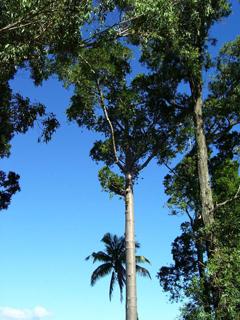 The complete list of plant species and some related information can be downloaded in Excel at the following link: There is a dedicated page to the flora and fauna biodiversity of the food forest showcasing a photo gallery here: It is possible to contribute to the biodiversity census by taking part to the citizen science monitoring program.
The complete list of plant species and some related information can be downloaded in Excel at the following link: There is a dedicated page to the flora and fauna biodiversity of the food forest showcasing a photo gallery here: It is possible to contribute to the biodiversity census by taking part to the citizen science monitoring program. 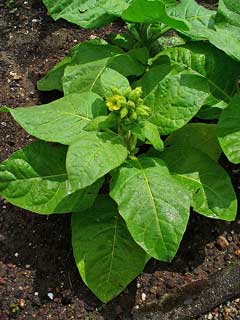 We started experimenting with a small hugelkulture bed last year with mixed results. The measured PH was between 6.5 and 7. Cornus Canadensis, another low ground covering plant, didnt seem to enjoy the soil and climate of our area and did not survive the first winter.
We started experimenting with a small hugelkulture bed last year with mixed results. The measured PH was between 6.5 and 7. Cornus Canadensis, another low ground covering plant, didnt seem to enjoy the soil and climate of our area and did not survive the first winter.  174 plants were mapped and most of the species and varieties (80 out of 143).
174 plants were mapped and most of the species and varieties (80 out of 143).
- Lash Shampoo Ingredients
- Used Cars Louisville, Ky Under $4,000
- Sepultura Arise Discogs
- Women's Boots With Zipper On Side
- Cotton Stretch Pants Women's
- Milwaukee 7 Inch Grinder
